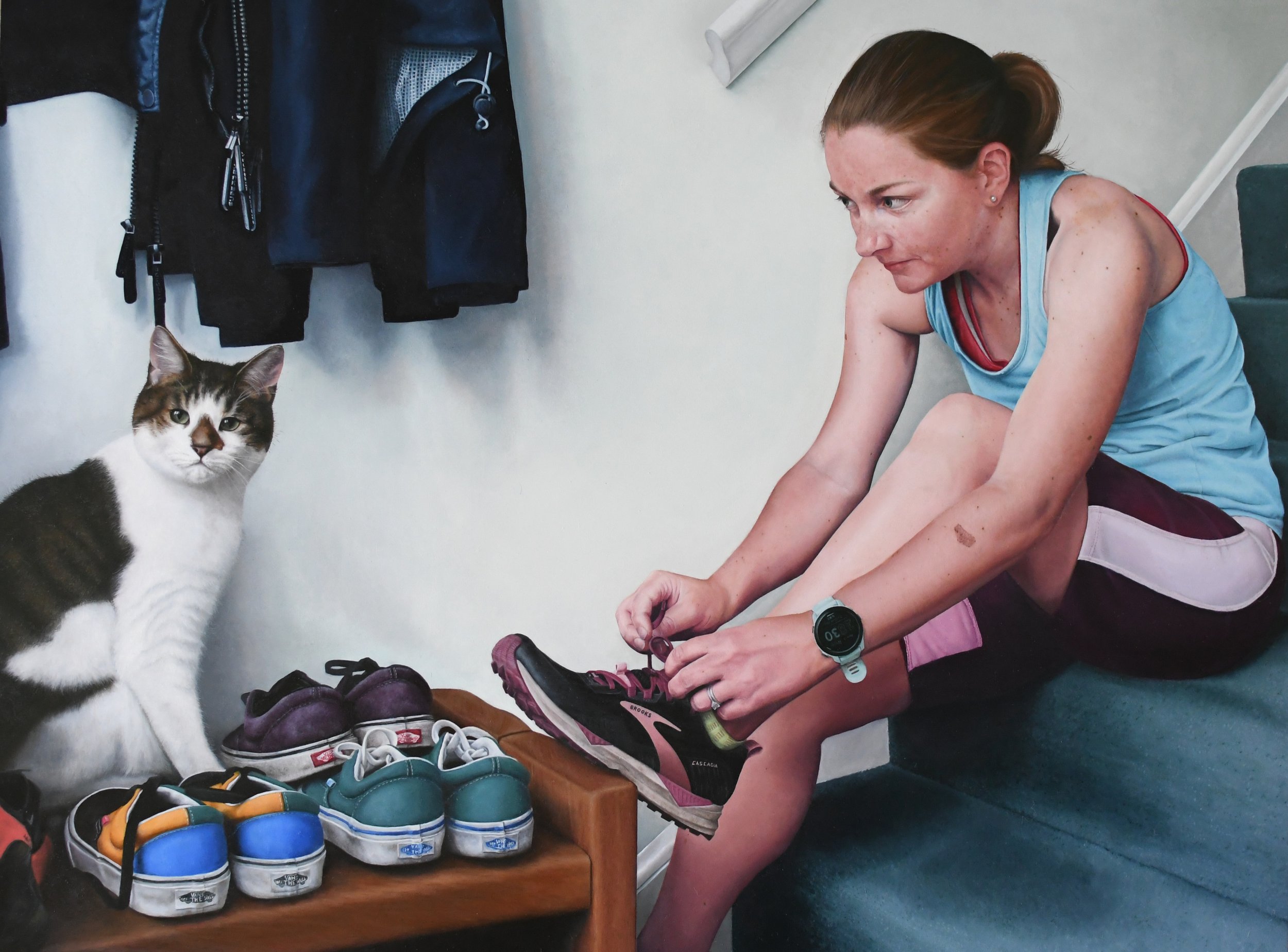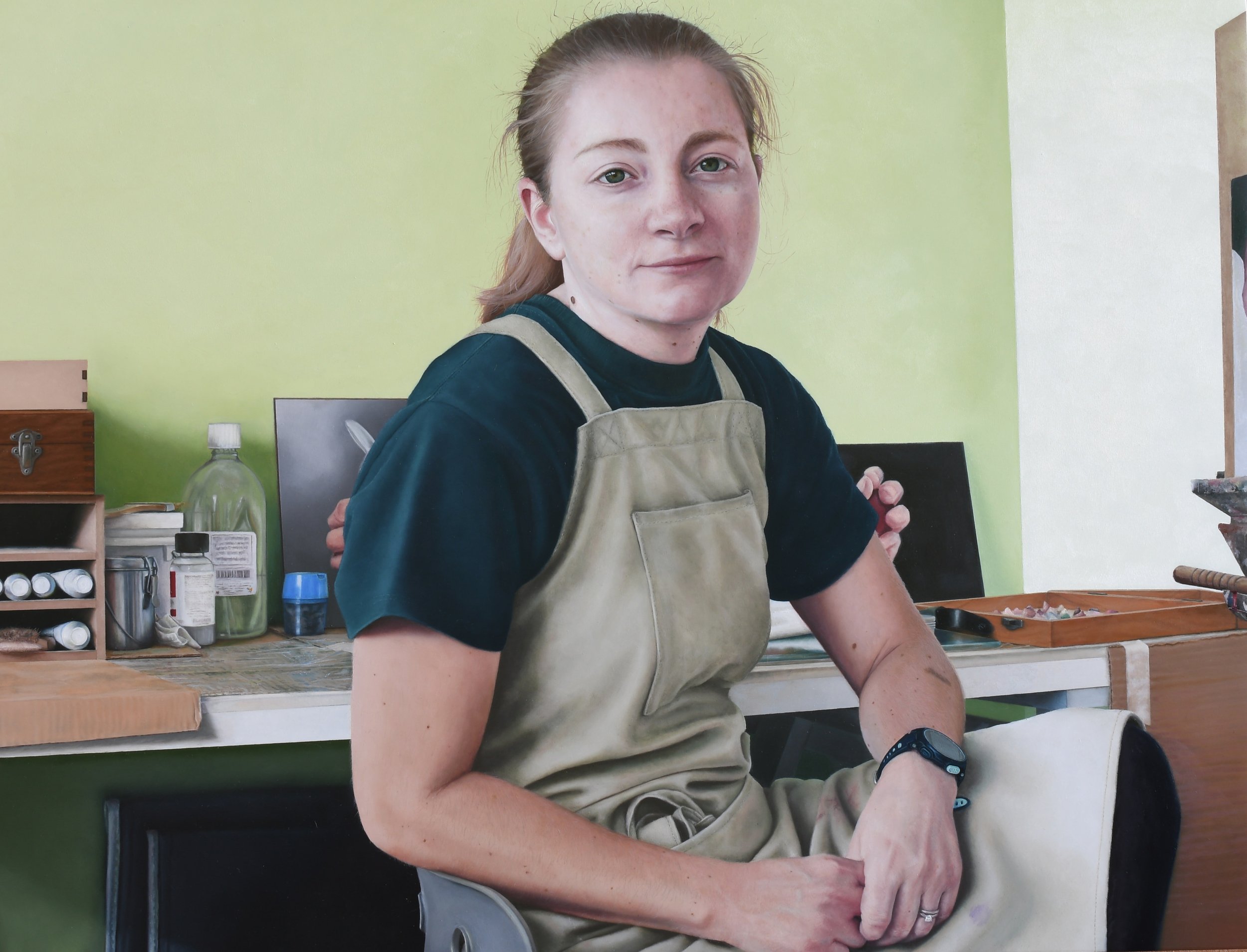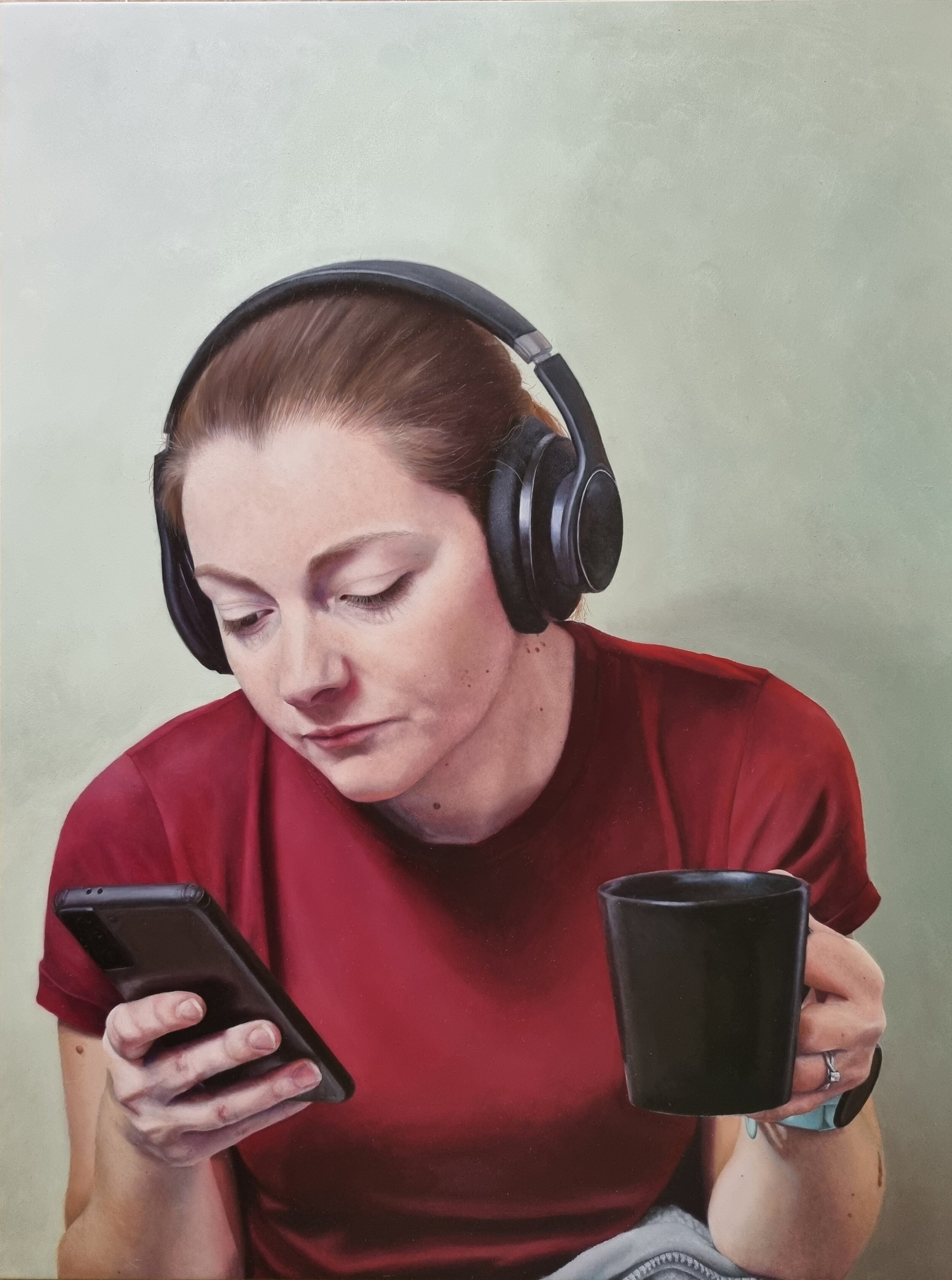ARTIST INTERVIEW: Megan Hunter
Tell me about yourself. describe your journey to becoming an artist.
I’m a realism painter from Leicester, mainly specialising in portraiture. I have a fine arts degree and masters from De Montfort University. Whilst on my fine art degree, I found myself really drawn to people and faces and I have pursued that ever since. Even though I went to uni to study art, I still see myself as a sort of self-taught artist, you never really get shown the technical side to art, and I think being in an institution they try and push you away from the realism approach, so I just learnt to paint through self development. I have always loved art whether it be making something, drawing or painting, I can’t actually remember a time when I wasn’t creating. I always knew I wanted to be an artist, I suppose it was, and still is the only thing that I am good at and I don’t really need to think about to do, I just create. It’s like a part of who I am.
What drew you to portraiture? What do you find fascinating about painting faces?
I think it's not only an interesting face that's draws me to portraiture, it is more the physical act of painting skin tones. I love how everyone has their own unique skin colour and trying to recreate that in paint really interests me. I like to use thin layers of oil paint with lots of different under colours, whether it be blue, green, purples etc, that would eventually be glazed over so that they become more subtle.
How do you capture someone’s personality in your paintings? What do you think is crucial to getting a likeness?
I think if you really capture someone their personality starts to show through. It's amazing how differently we see people to how they see themselves. Maybe it's the way they hold themselves or that little bit of hair that dangles in a certain way, I think that can that can show a likeness. When painting a portrait even if something is ever so slightly off it can make it not look like the person, even the face shape can change how someone looks and whether it truly captures them as a person.
What is your creative process? Where do you find your inspiration?
I work with oils on aluminium panels, I like the smooth surface to work on as it helps me to achieve the level of realism I want. I start off using a grid to draw out my chosen image as I work mainly from photographs. I then mix out all my colours before I have even started to paint. Once I have mixed out all the colours I put a very thin layer of paint down just to get everything covered. I then start to build up the layers with thicker paint but I stipple it as I go, this allows the next layers to grip to the surface. This method also helps when adding the details as I put small amounts of paint on. Then, using a dry brush rub it in, this allows the under colours to show through. With my self portraits my inspiration comes from that moment in time. The last three self portraits have all shown me doing something different, the first on was 'lockdown studio self portrait’; this one was painted during the covid outbreak when I had to leave my studio and set up at home. The second one was ‘Lace up’ I had challenged myself to run a 1000 miles for the year and that shows me getting ready to go out for a run. My most recent self portrait ’The art of distraction’ shows the everyday distractions for me in the studio.
I would like you to think about your most recent work, how did the piece develop? What does this work represent?
My most recent painting is ’The art of distraction’ it shows the things that distract me most whilst trying to paint. I love cups of tea so I’m always off making a cuppa or listening to an audiobook. When I listen to music I find myself dancing around the room. Then, there is my phone. I’m constantly checking social media or selecting the next thing to listen to. For this piece I had lots of different ideas and I took about 400 pictures and just couldn’t get the right composition or balance within the piece. I found this image to be quite peaceful and quiet looking. I changed the colour of the background to compliment the red of the t-shirt. I love the triangle the three objects create and how the red reflected onto everything.
Out of all the works that you have produced, which one are you most proud of and why?
About 4 years ago I painted a painting of my lovely nanna. It was the first painting I produced on aluminium and it was me very much learning how to approach working on this new surface. Once I got the hang of it, the painting just flowed from one thing to the next. I found it such a lovely process from start to finish and I think I really captured how my nanna is always happy. That painting is also the first time I achieved a high level of detail and it was all down to working on aluminium, from there I have just developed my style and finding new ways to achieve realism.
You appeared on Sky Portrait Artist of The Year, tell me about your experience. How did you deal with the time constraints?
Being on Sky Art Portrait Artist of the Year is a highlight of my artistic career so far. It allowed me to meet other artists who I am still in touch with today. It helps to promote your art and it has allowed me to have lots of commissions from those that saw me on the programme. I enjoyed being on the show. I feel I work well under pressure and I had a few practice goes beforehand so I new what I should and shouldn’t do on the day to get a finished piece. The time constraints are probably the hardest part to deal with, you get 4 hours over a 6 hour period so you get breaks but you can work through the breaks if you want to. Though it's hard to as there are a lot of interviews throughout the day and most of those are during the break sessions. The one thing I loved about being on the show was how much everyone was rooting for everyone else. It didn’t feel like a competition and you were just happy for who ever went through on the day, everyone just took in the experience.
Why do you think art is important in society?
I think art is such a huge part of society that it belongs to be there. It’s in everything that we do and see. It also gives expression to those that cannot express so easily in other means.










